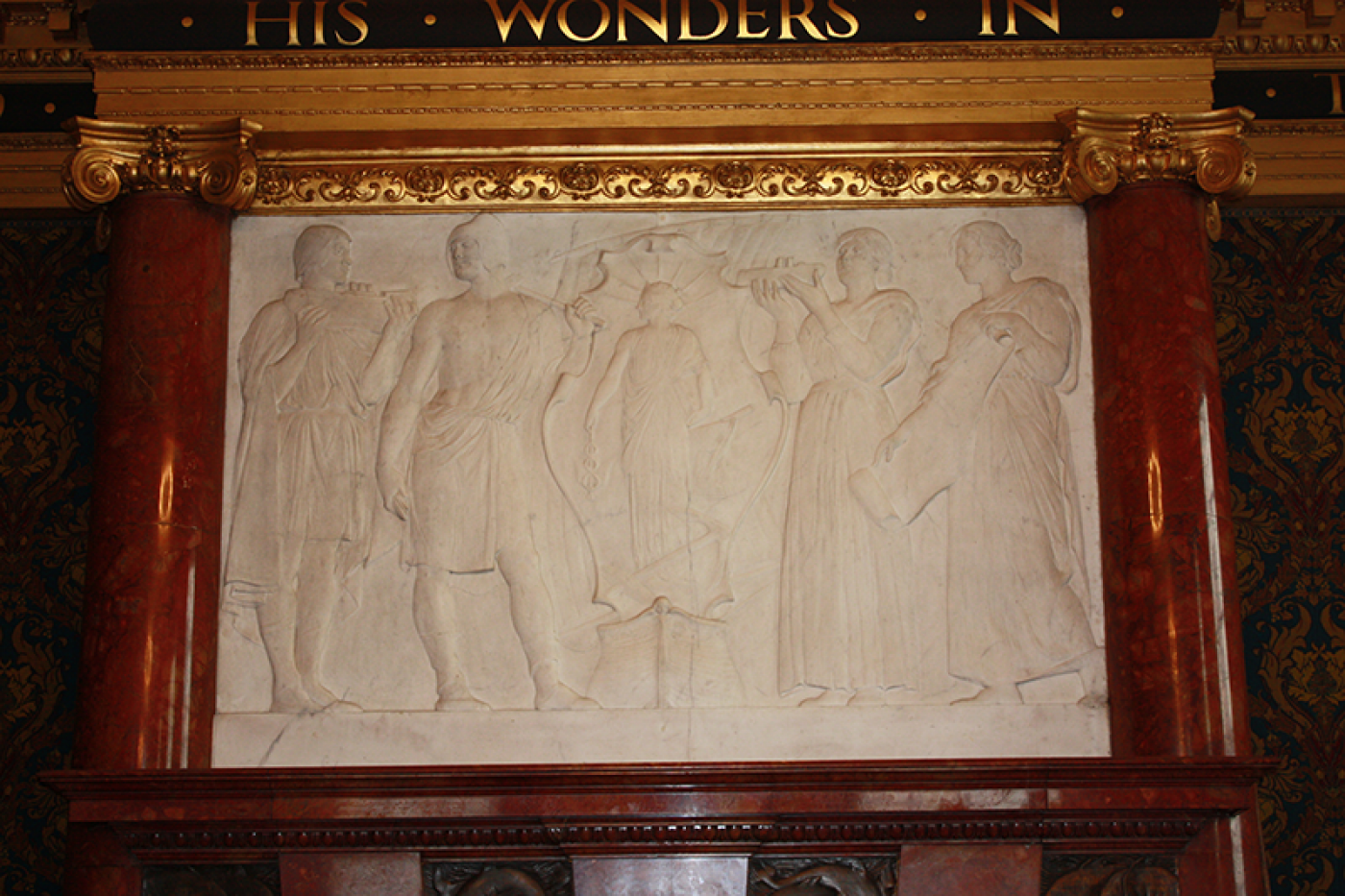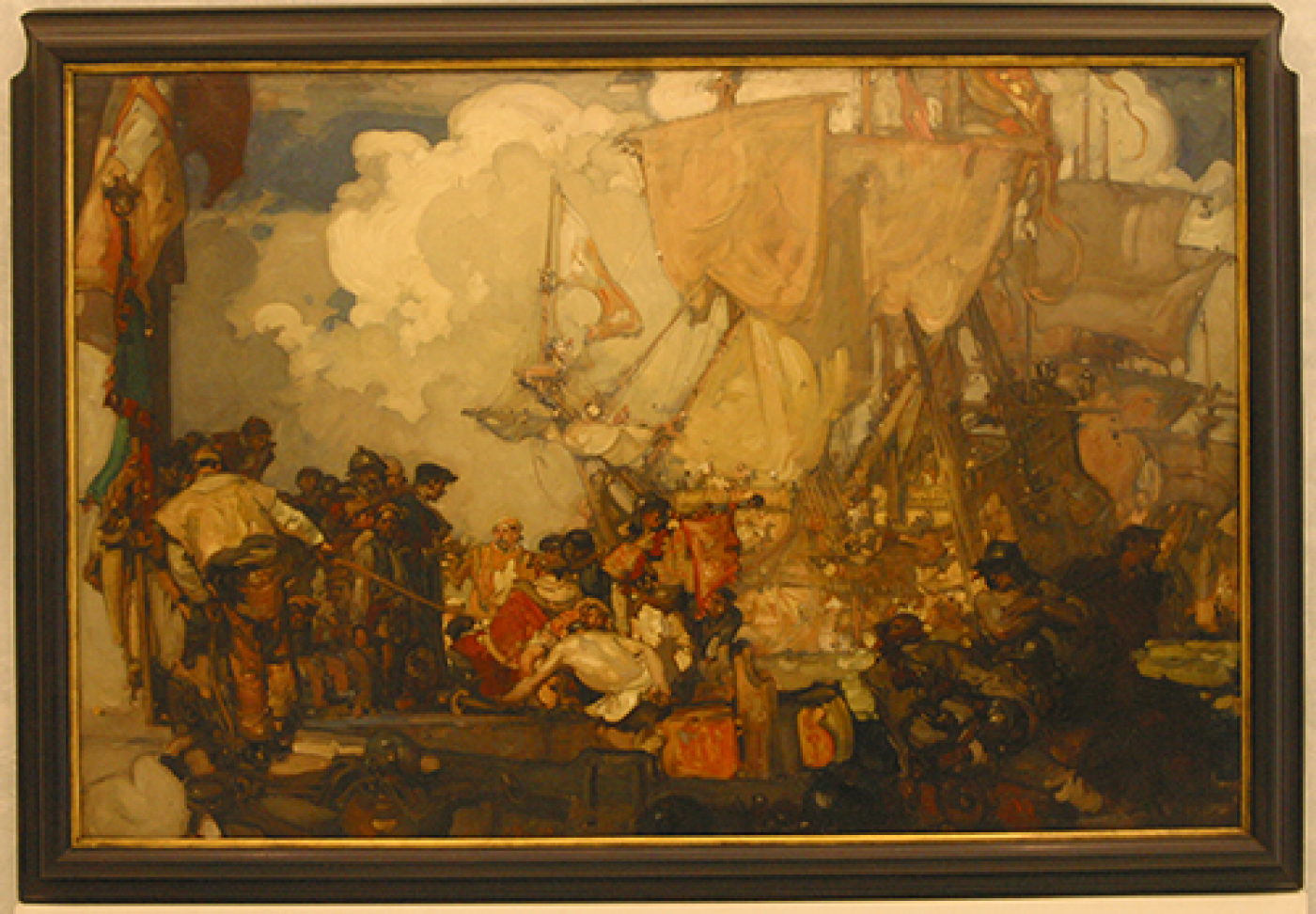Thursday, May 11 2017
After almost three years of working at the LRF Heritage & Education Centre, I thought it was about time I took on the gargantuan task of choosing my favourite treasure. Now I find choosing your favourite treasure is tantamount to choosing your favourite Beatles track or your favourite TV show – it changes like the weather. After weeks of deliberating, I chose Bertram Pegram’s marble frieze from 71 Fenchurch Street's General Committee room.

The frieze, made of white Carrara marble, sits above the General Committee room’s William de Morgan fireplace. The relief tells the story of shipbuilding, from a ship's design by a naval architect to its delivery to a shipowner. The journey begins on the far right, with a naval architect working on a ship’s design (hull, rigging, dimensions). She is then joined by a Ship Surveyor, simply surveying the ship. In the centre of the frieze, proudly sits the Lloyd’s Register Lady, representing LR and classification. The LR Lady was the Society’s first ever logo and dates back to 1799, when it first appeared on the cover of the Shipowners' 'Red' Register Book. Next stands a shipwright, wearing a helmet and holding the tools of his trade. Lastly, is the shipowner, gratefully looking at the three individuals that ensured his ship was built in a satisfactory condition.

The superb frieze offers a stark visual contrast to the General Committee room’s colourful interiors. Indeed, this sentiment was felt by the General Committee of 1901 that 'did not like the chill pallor of the white marble'.[1]
Initially, the Committee wrote to Pegram, requesting that he colour the marble, which was met with utter discontent from Pegram – describing such an act as a ‘desecration of the marble and his work’. Undeterred, the Committee acquired Sir Frank Brangwyn’s oil painting Blake’s Return after the Capture of the Plate Vessels (1657). The Committee believed the 'rich tones of Brangwyn’s expressionist brushstrokes' [2] would conceal the marble relief – ensuring the colourful theme of the room continued throughout.

It seemed a real shame for such an exquisite piece to be neglected. Incredibly, Brangwyn’s painting covered the frieze until 1995.
Thankfully, the frieze is no longer concealed behind the painting and is on permanent display in its original state in the General Committee room. Today the frieze is a focal part of the Centre’s educational visits and also referenced in 71 Fenchurch Street's building brochure. In recounting the story of the frieze, I think back to a rather fitting quote from Frank Lynn Jenkins, the artist that designed the Spirit of Maritime Commerce and the General Committee landing’s bronze frieze. Jenkins believed 'The art of every age should breathe the essence of the time which produces it; most certain it is that work which complies with this condition will not only give satisfaction by reason of its fitness, but will be of infinite historical value in the future'.[3] It seems that Jenkins not only possessed exceptional artistic merit, but also realised that 71 Fenchurch Street would bear historical importance for years to come.
For those wishing to see the frieze, the Collcutt building will be open to the public on Saturday 16 September during Open House London 2017.
- [1] Lloyd's Register and Fenchurch Street - A Modern Palace of Art
- [2] Lloyd's Register and Fenchurch Street - A Modern Palace of Art
- [3] Frank Lynn Jenkins - RIBA Lecture 10/04/1899

